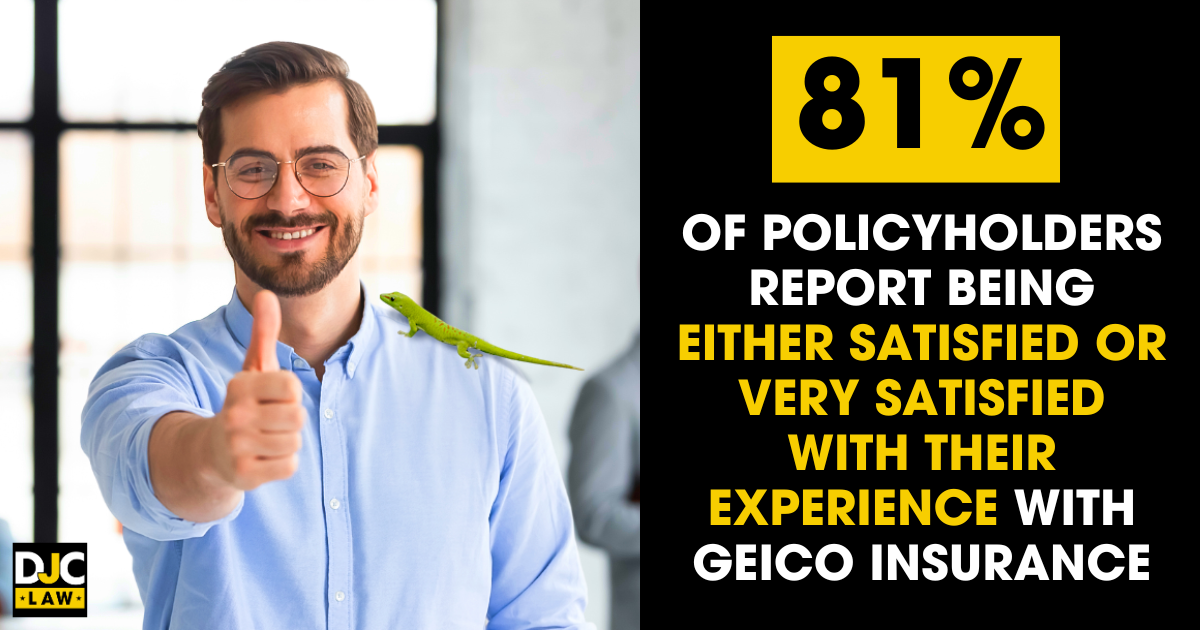
Navigating a car accident involves making an insurance claim, but every insurer has a separate claims system, making the whole thing quite complex. GEICO is one of America’s most well-known insurance companies, known for its talking gecko ad. Like all insurers, GEICO has its own system for filing a claim. If you need legal assistance with your claim, an experienced Austin car accident lawyer can help protect your rights.
With the Insurance Information Institute reporting that GEICO covers more than 28 million vehicles, this insurer has a long-established claims system. In this guide, we’ll discuss what to do if another driver hits you and you have to make a claim through GEICO.
Key Takeaways
- Every insurance company has its own claims process for policyholders after an accident, and GEICO is no exception.
- After a car accident, you should prioritize your safety and well-being before gathering evidence from the accident scene. Report your accident to GEICO and work with a lawyer throughout the claims process.
- GEICO allows you to make a claim over the phone, via their website, or through the GEICO Mobile app. Fill in the relevant forms, include your insurance policy number, and attach any supporting documentation about your accident.
- A claims adjuster will investigate the accident, determine liability, and decide on the value of your settlement, which you can choose to accept or dispute.
- GEICO provides a dispute process for claimants when their claims are denied or they believe they’re entitled to a larger settlement. Enlist a lawyer to pursue this process and maximize your settlement.
- The best way to handle any insurance claim with GEICO is to work with a legal professional to prevent bad faith tactics, push your claim, and aggressively assert your legal rights.
The Essential Steps to Take Immediately After a Car Accident
Ensuring you’re covered for your losses begins at the accident scene. Managing your safety and well-being and documenting the accident scene enables you to start building your case in the minutes after impact. Collecting as much information as possible now ensures your claim is successful and you’ve done what’s best for your health.
Typically, three major steps are involved in handling a car accident, regardless of the circumstances.
Prioritize Safety and Well-Being

Your first step is to seek help for your injuries and get to safety. According to the IIHS, there were 2.6 million emergency room visits due to car accidents in 2022. Get off the road and inspect yourself and your passengers for injuries. If anyone needs urgent medical attention, call 911.
If you’re lucky enough to walk away, don’t discount the potential for hidden injuries. Whiplash, concussion, and internal bleeding may not show any symptoms for hours, days, or weeks. That’s why it’s recommended that you visit the emergency room for an examination anyway.
Prompt action could save your life!
Documenting the Accident Scene
The accident scene is where the bulk of the evidence is for your insurance claim or a future personal injury lawsuit. Use your smartphone to take photos and videos of the accident scene. Focus on visible injuries, vehicle damage, property damage, road signage, and road conditions.
It’s also the ideal time to talk to any eyewitnesses. Take down their contact details so that they can give a statement later. Just remember that eyewitnesses aren’t required to cooperate, so you’ll have to respect their decision.
We also recommend calling the police, as a traffic officer can fill out a police accident report, which is another crucial form of evidence.
Collecting Important Information for Your Claim
GEICO will ask you to provide information about your accident and the drivers involved. Be prepared to provide your account of the scene and other pertinent information, including contact details, policy number, and any evidence you gathered at the scene.
Avoid speculating why the crash happened, especially if both sides were to blame. Answer everything asked of you factually.
Understanding GEICO’s Claims Process
GEICO’s claims process begins by filing a claim by calling or using their mobile app. You’ll be asked to schedule an inspection of your vehicle. If your car is undrivable, an insurance adjuster will come to you.
According to Insurance Business America, GEICO is America’s third-largest auto insurance provider. So many people choose them because of their relatively straightforward claims process. However, GEICO is still an auto insurer and will do everything possible to save money on paying out claims. That’s why hiring an attorney to navigate your claim and avoid bad-faith tactics is a smart decision.
The Importance of Reporting Your Claim Promptly
Reporting your auto insurance claim promptly should be a matter of priority because most insurers require all accidents to be reported within 24-72 hours. Moreover, waiting to file your claim means the memories will begin to fade so that you might lose out on key details. Plus, it leaves the issue hanging in the air, stopping you from moving on.
Another key reason for reporting quickly is that states have a statute of limitations on personal injury claims. If your insurer refuses to pay, the next step is to lodge a lawsuit through an experienced car accident attorney. Dealing with your insurer could take months and many states have statutes of limitations of just two to three years.
If you allow the statute of limitations to elapse, you lose your right to file a claim for financial compensation.
Choosing Your Preferred Method to File a Claim
GEICO offers multiple ways to file your claim. You can file a claim online via your browser, download the GEICO Mobile app, or call their claims department directly. Regardless of your preferred method, expect to provide details like the date of your accident, location, and existing policy number, as well as any supporting documentation, including photographs.
No method will result in your claim being processed faster than another, so it’s all down to personal preference.
Filing a Claim through the GEICO Mobile App: A Step-by-Step Guide
The GEICO Mobile app is one of the most convenient ways of filing your claim. Start by navigating to your usual app store and download the app. You’ll need to register for an account to get started. Once logged in, navigate to the “Claims” section to start filing your claim.
Here’s what you’ll have to do:
- Click on “Claims.”
- Search for the “Report a Claim” section.
- Provide accident details and fill out every field.
- Upload any supporting documents, such as any photos you took.
- Complete the form and click to submit your claim.
Provide as much information as possible. Your claim won’t be outright denied for insufficient information, but it can heavily delay it as you’ll be asked to provide further information by their adjustment team.
How to Report a Claim by Phone: What You Need to Know
Some accident victims might call GEICO and speak to a human from their claims department. If you plan to file a claim, call their hotline at (800) 861-8380. You’ll be connected to an agent who will open a claim on your behalf.
Follow these steps:
- Ensure you have your policy number ready.
- Provide an accurate narrative of the accident.
- Report any injuries to the GEICO rep immediately.
- Provide supporting documentation. If any files need to be sent, you’ll be directed on how to do this.
Claiming by phone tends to be the least efficient method because there’s no way to provide supporting evidence immediately. Moreover, you may be left waiting on hold until an agent becomes available.
We recommend filing your claim via their website or through the mobile app.
Navigating the Claims Investigation and Approval Process
Filing your claim will trigger the investigation process. A claims adjuster will take control of your case and assess the damage and all available evidence. If your claim is valid, GEICO will make you an offer.
You don’t have to accept their offer and may choose to provide further evidence of your losses. If you can’t secure a suitable compensation package, your personal injury lawyer may choose to file a lawsuit for further damages.
What Happens After You File a Claim?
Immediately after filing a claim, an insurance adjuster will investigate. With GEICO, you’ll be expected to make an appointment for a vehicle damage assessment. If you can’t drive or your car is out of action, an adjuster can come to you.
According to Acrisure, the timeline for investigating and approving your claim can take anywhere from a few days to a few months. Accidents with minor injuries and clear liability are usually processed exceptionally quickly, but if there are disputed liability and catastrophic injuries, it can take much longer.
The Role of Claims Adjusters in GEICO Claims
GEICO hires claims adjusters to investigate claims and determine whether the claimant is entitled to a payout. It’s their job to investigate accidents, decide who was to blame, and calculate total damages.
Understand that insurance adjusters aren’t on your side. They’re there to save GEICO money. Moreover, the other driver’s insurer will also have adjusters doing the exact same thing, which is why you must be extremely careful about what you say to an adjuster.
The easiest way to deal with adjusters is to redirect all communications to a car accident lawyer.
How to Provide Additional Documentation and Evidence
Additional evidence that wasn’t available when you initially made the claim can be provided at any point if you believe it strengthens your case. GEICO allows you to upload additional documentation to your claim via your account on your browser or through the mobile app.
You’re entitled to provide extra documentation for as long as your claim remains active. Examples of evidence you might not have when initially making your claim include:
- Medical reports
- Accident reconstruction analysis
- Official police crash reports
- Repair bill estimates
Post-Claim Actions: What to Expect Next
Successfully making your claim is the beginning of the process. Typically, there will be nothing you can do until GEICO gets back to you, either requesting more information or providing a settlement offer. How long this takes depends on the complexity of your claim and how much evidence you provide.
Understanding the Timeline for Claim Resolution
The timeline for claim resolution depends entirely on your case because every case is unique. According to the GEICO website, the insurer claims your claim could be settled in as little as 48 hours.
In reality, a 48-hour timeline is possible for extremely simple claims, potentially amounting to a few hundred to a few thousand dollars where liability is already obvious. Most claims will likely take a few weeks but can take much longer.
For example, you’re likelier to wait longer if your car was totaled or you experienced severe injuries. On the latter point, your claim will take longer because it may take a few weeks or months to ascertain the true extent of your injuries.
Repairing Your Vehicle: Options Available With GEICO
Repairing your vehicle with GEICO depends on where you live. No state forces policyholders to use an insurer-recommended repair shop. However, that doesn’t mean you can spend whatever amount you like, and your insurer must pay.
Auto insurers like GEICO usually use adjusters to assess the repair cost of your car. They may commission multiple estimates if they believe the estimate from your chosen garage is too high. Moreover, auto insurers can refuse to pay extra if they believe your repair bill is too high.
The most straightforward way of avoiding this issue is to, of course, use a garage within the GEICO network, but it’s worthwhile to shop around anyway.
Receiving Your Payout: How Payments Are Processed
GEICO will initially offer a settlement after approving your claim. You aren’t required to accept the insurer’s offer and can appeal, but you’ll be expected to provide evidence. If you believe they’ve acted in bad faith, you can also file a bad-faith lawsuit against them through your personal injury attorney.
Before accepting a payout, speak to your lawyer for a professional opinion on whether the amount offered is fair. If you’re satisfied and you accept, you’ll agree to the settlement and GEICO will pay you either digitally or by mailing you a check.
Any payout will cover your losses minus the deductible on your policy.
Tips for a Smooth Claims Experience With GEICO
Ensuring a smooth claims experience means providing solid evidence and documentation that proves the other driver was at fault and you suffered losses because of their negligence. Guaranteeing a smooth claims experience can be done by being organized and acting quickly.
Follow these tips to streamline your GEICO claim:
- Maintain detailed records of everything from medical bills and repair estimates to out-of-pocket expenses and lost wages.
- Take photos and videos of the accident scene to provide visual evidence.
- Never provide recorded statements without consulting an attorney.
- Seek medical attention immediately after your accident and follow your rehabilitation instructions to the letter.
- Understand your policy limits so you know the maximum amount you can claim and the deductible you’ll be expected to cover.
- Respond quickly to any requests for documentation to avoid any delays.
- Consult an attorney if you believe your claim isn’t being processed properly or your legal rights have been violated.
Common Mistakes to Avoid When Filing Your Claim
Filing your claim is a minefield. Say or do the wrong thing, and your claim could be outright denied, or your settlement package slashed, especially if you live in a comparative liability state.
According to Alabama-based Infinity Auto Insurance, here are the most common reasons claims are denied:
- Providing inaccurate or insufficient details as part of your claim.
- Possessing insufficient coverage.
- Not reporting your accident in good time.
- Non-disclosure and misrepresentation.
- Violation of your policy’s terms and conditions.
In short, the best way to avoid wrecking your claim is to provide all the details you can, stick to the facts, and act quickly.
How to Communicate Effectively With GEICO Representatives
Dealing with GEICO representatives means understanding that adjusters want to save the insurer money. How you communicate could determine whether you get your full settlement or nothing at all.
Generally, most customers are satisfied with GEICO, with MarketWatch reporting that 81% of policyholders are either satisfied or very satisfied with their experience. However, communication is everything.

Here are the golden rules to bear in mind when dealing with GEICO’s agents:
- Be Polite – Temper your emotions. Don’t snap at their agents or become abusive.
- Be Prepared – Know what you want. Understand the size of the settlement you’re looking for and make it clear. Back up your case with clear documentation. Above all, don’t feel you must accept the first offer, as this will nearly always be a lowball offer.
- Never Say Sorry – Don’t issue any form of apology, even if the accident was your fault. An apology can be used against you later to limit how much money you get.
- Decline Recorded Statements – Recorded statements are vital pieces of evidence for insurers, but there’s no benefit to providing one from your perspective. It’s in your best interest to avoid recorded statements, as anything you say will be used against you later.
- Avoid Giving Too Much Information – Stick to the facts, regardless of how friendly the agent is. Provide them with the information they want but don’t give anything more. Again, anything you say can and will be used against you.
Tread carefully when dealing with GEICO’s team of adjusters, as bad-faith tactics are commonplace throughout the industry. That’s why hiring an attorney who can deal with insurance representatives is wise.
What if the Accident Was Partially My Fault?
Fault isn’t always obvious after a car accident. The number one rule is never to admit that you’re wholly or partially at fault, even if you think you might have contributed.
GEICO can and will use fault as a reason to deny your claim. One of the most common mistakes is that people speculate on the cause of the accident when talking to an adjuster. Your words can be used against you to show that you were partially or wholly at fault.
Depending on where you live, though, you could still receive compensation even if you’re partially at fault. In states like Texas, which operates on a comparative negligence system, you can still claim compensation even if you’re partially at fault. Under Texas law, if you’re less than 51% at fault, you can still claim compensation by filing a personal injury lawsuit.
GEICO Coverage Limitations: What You Need to Know
GEICO will only pay up to the maximum dollar amount your coverage offers. The minimum insurance your state requires likely won’t cover the total cost of your accident. Understanding your coverage, what it covers, and up to what amount is critical because this will define how much you’re entitled to.
Here’s a rundown of the coverage options offered by GEICO:
- Bodily Injury Liability – Pays for bodily injury damages and death for accidents that were your fault.
- Property Damage Liability – Covers property damage for accidents that were your fault.
- Medical Payments Coverage – This covers your medical expenses resulting from your car accident.
- Personal Injury Protection (PIP) – PIP coverage will pay for medical treatment and lost wages from a car accident, regardless of who was at fault.
- Uninsured/Underinsured Motorist Coverage – This coverage protects you if the other driver either doesn’t have enough coverage to cover your losses or is driving without insurance. According to the Insurance Information Institute, around one in seven drivers are estimated to have no insurance.
- Collision Coverage – Covers damage to your vehicle if it hits or is hit by another vehicle or an object.
- Comprehensive Coverage – Comprehensive coverage pays for damage to your car caused by covered losses, including fire, theft, vandalism, and floods.
How much GEICO will pay you depends entirely on the circumstances of your accident and your coverage. For example, if an accident was your fault and you don’t have PIP, GEICO isn’t going to pay for your medical expenses. That’s why experts recommend never opting for the legal minimum in coverage.
How to Handle Claim Denials or Disputes
Your claim may be denied for any reason, but the law states that GEICO must provide a valid reason why. All claimants are entitled to appeal a claim denial or file a lawsuit if they believe they’re a victim of bad faith tactics.
So, what should you do if your claim is denied?
Begin by reviewing the denial letter to determine why your claim was rejected. Look for further evidence to dispute the claim before contacting GEICO through your lawyer to hold them accountable. Direct discussion may resolve the issue, but if not, have your attorney file a formal appeal.
When to Consult a Car Accident Lawyer for Your GEICO Claim
GEICO’s only consideration is protecting their bottom line, not looking out for your best interests. Consulting a car accident lawyer is critical early in the process because it insulates you from the bad-faith tactics adjusters employ.
Most people wait until their claims are denied before contacting a lawyer, which makes their job ten times harder. Working with a lawyer during the initial claims process forces GEICO to take your claim seriously and protects you against missteps that could invalidate your claim.
Ideally, you should be making two calls after your accident. The first should report your accident to GEICO (as required by your policy), and the second should be to a personal injury lawyer.
How Legal Experts Can Help Dispute a Low Settlement Offer
Legal experts will dispute a low settlement offer or an outright denial by using all available evidence to question and pick apart GEICO’s justification for its offer. They’ll use all their knowledge of the law to ensure your settlement is more appropriate.
Some of the ways they do this include:
- Comprehensive Investigations – Your lawyer will gather evidence and analyze it to build a strong case. They’ll show step-by-step what your claim is really worth and why GEICO is not playing fair.
- Precise Assessment – Legal professionals have access to a network of experts who can factor in both economic and non-economic damages to win you the compensation you deserve.
- Aggressive Negotiation – Your lawyer understands the tricks insurers like GEICO use. They’ll counter these tactics and assert your legal rights to force adjusters to increase their settlement offer.
Moreover, lawyers won’t just negotiate and push your case but they’ll litigate if they have to. Your attorney can file a formal lawsuit and take your case to court to achieve the justice you’re entitled to.
Remember, the system is set up for drivers with firm legal rights. Under the law, you’re entitled to every penny of your claim, but insurers regularly violate drivers’ legal rights. Unfortunately, many claimants simply give up or aren’t aware they’ve been treated poorly.
Furthermore, many drivers accept an insurer’s decision at face value. Again, you have the legal right to dispute the decision on your claim, including filing a lawsuit against the insurer themselves.
Legal Steps to Take If GEICO Delays or Undervalues Your Claim
Getting lowballed, denied, or delayed as part of the claims process is frustrating and adds further hardship. GEICO knows this, and it’s a common strategy used to get policyholders to accept low offers or give up on the claims process entirely.
The American legal system lets you take steps if you believe your claim has been unnecessarily delayed, undervalued, or rejected.
If you’re not getting anywhere with GEICO, your lawyer will go through several steps:
- Negotiation – Your lawyer will get in touch with GEICO. Usually, contact from a lawyer is enough to get GEICO to sit up and take notice because the last thing they want is a lawsuit.
- Mediation – Auto insurance dispute mediation may be an option, where a third party will work with both sides to resolve the situation. Mediation is typically non-binding but can serve as evidence if it doesn’t work.
- Lawsuit – As a last resort, your lawyer can file a lawsuit against GEICO or the at-fault driver directly. This doesn’t necessarily have to result in a court trial. In many cases, the threat of litigation is enough to win a fair offer.
Can You Sue GEICO for a Bad Faith Insurance Claim?
Insurers are expected to act in good faith, meaning they must deal with you fairly to enable you to take advantage of the product you paid for. If GEICO fails to do this, you can sue GEICO for bad faith.
Proving bad faith means you must prove that GEICO has acted unreasonably and that GEICO either knew it was acting unreasonably or its conduct was so reckless that it should have been considered blatant.
Examples of bad faith actions include:
- Misrepresenting relevant facts.
- Imposing restrictions not in your policy.
- Offering lowball settlements to compel the claimant to settle.
- Not acting within a reasonable period of time.
- Cutting off communication with the claimant.
- Not explaining why a claim was denied.
Any of these actions are grounds for a bad faith lawsuit. Note that these lawsuits are separate from your initial car accident claim. It’s perfectly plausible to receive a settlement for your accident and a separate settlement from the bad faith case.
How a Lawyer Can Help Prove Liability in a Car Accident Case
Attorneys are there to help prove your case beyond dispute. They’ll gather and organize evidence to build the strongest possible case. The goal is to demonstrate that the other driver was negligent and that you suffered losses and establish a dollar value for those losses.
During your claim, a lawyer might:
- Collect evidence.
- Investigate the accident scene.
- Enlist expert witnesses.
- Commission accident reconstructions.
- Reach out to eyewitnesses.
- Secure surveillance footage.
Alongside building the strongest possible case, your lawyer will ultimately take the stress and strain off your shoulders, enabling you to focus on your recovery.
Insurance Company Car Accident Claims FAQs
What is the longest a car accident settlement can take?
There’s no time limit on how long it can take to settle a case. Generally, insurers are required to act within a reasonable timespan, but there isn’t a precise number of working days attached to these laws. However, if you believe the investigation time is unreasonable, you can take legal action.
How long after a claim is settled do you get paid?
Depending on your state, you can expect to receive your money within 30 to 60 days. Insurers are bound by state law to pay within a specific period. If they delay your payment and can’t provide a valid reason, this is an example of bad faith tactics.
How many times can you appeal a car insurance claim?
U.S. law places no limit on how many times you can appeal a claims decision through an insurer’s internal systems. However, most insurance companies limit how many times you can appeal the decision. If you exhaust your appeals, the next step is to file a lawsuit against the insurer.


